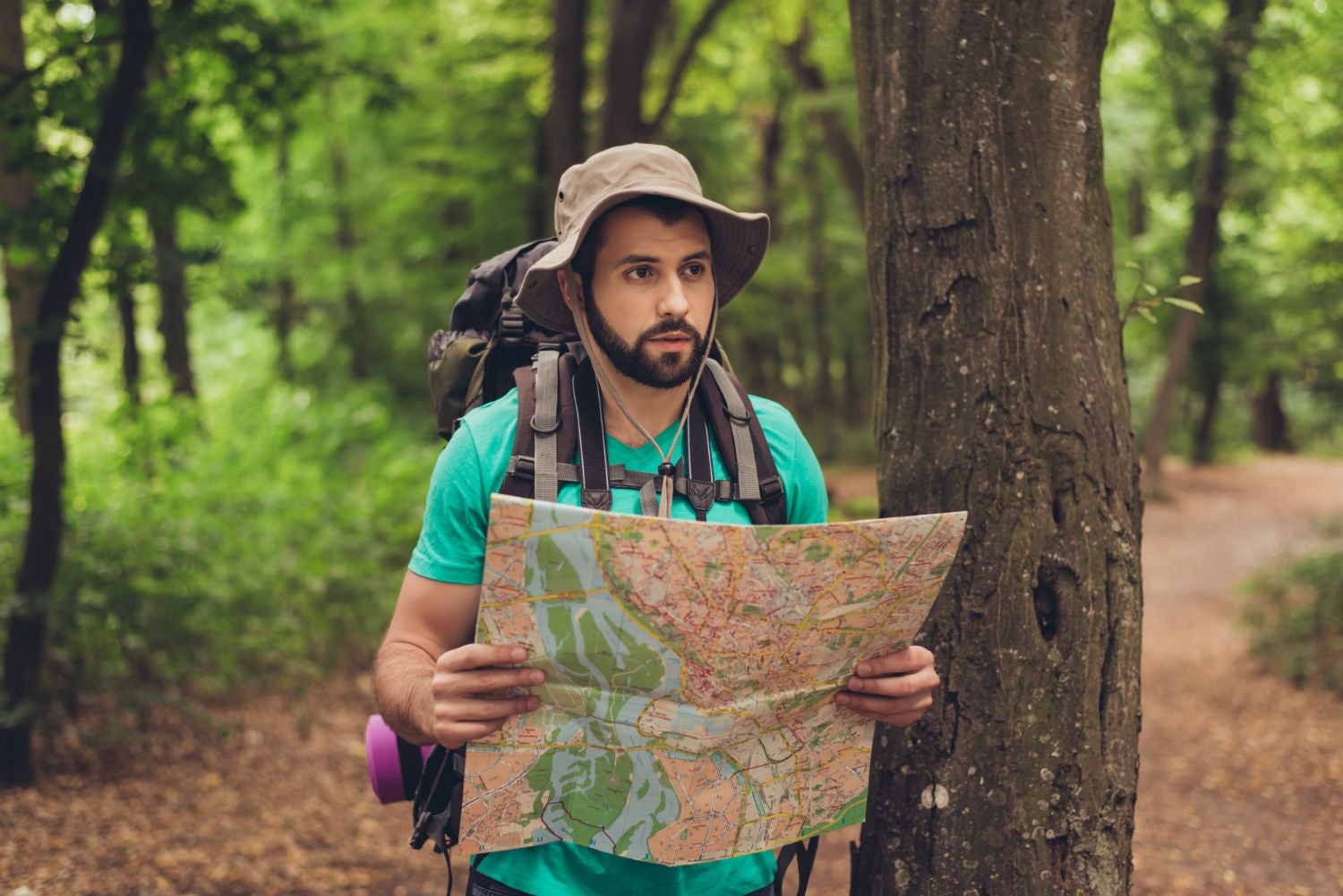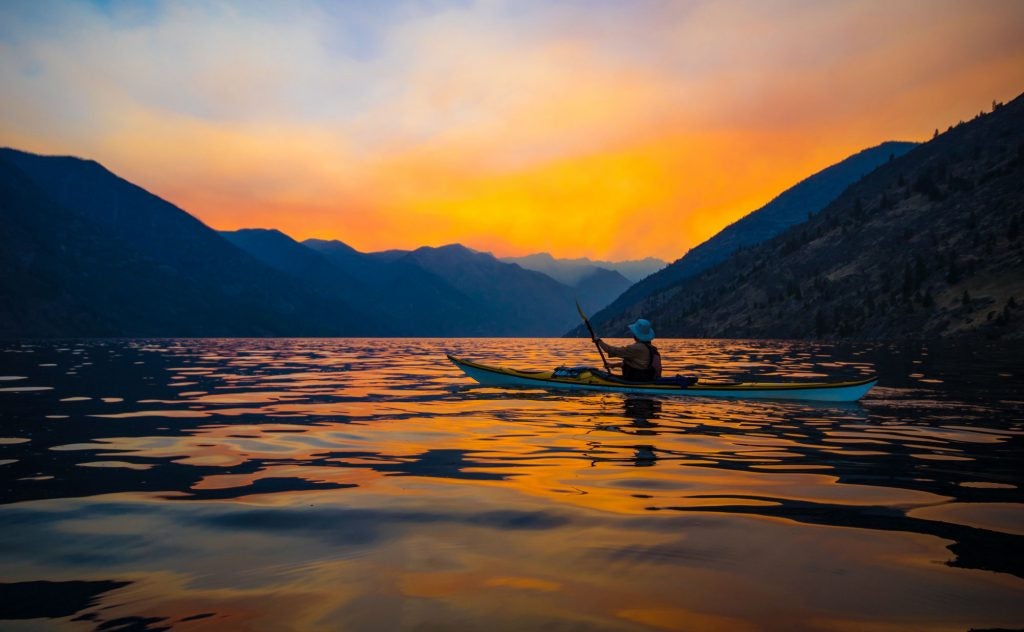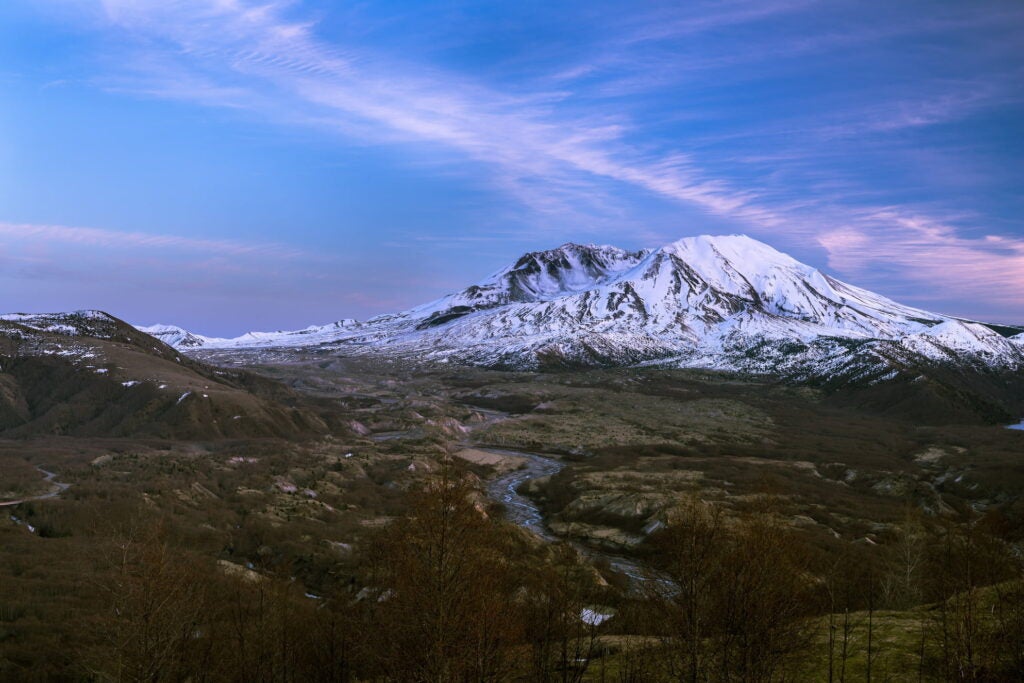This glossary of camping terms will have you covered from the campground to the crag. Catch up on the outdoor lexicon, or test your expert knowledge. We bet you’ll discover a few new words!
One really cool thing about camping is that it overlaps with nearly every other outdoor activity. Hikers camp. Climbers camp. Skiiers camp. RVers camp. Trail runners camp. Campers camp. You get the idea.
This means that not only will you hear common camping terms at your campground (like “guy lines” and “bivy sack,”) you’re also likely to run into slang from a variety of outdoor hobbies and lifestyles.
Some of the lingo hikers, mountain climbers, surfers, and skiers use is borrowed from geological terms for different mountain formations or landscapes. Some is slang that developed from forgotten or repurposed words to more adequately express the unique way we feel in nature. Other terms arose to describe things that we previously didn’t have words for because human beings, incredibly, keep finding ways to do what’s never been done before.
This list of camping terms could be 100 times longer. So don’t let yourself feel intimidated by unknown vocabulary. There’s a lot of it, and language is always evolving. We’ll keep updating this glossary of outdoorsy vocabulary to help you stay in-the-know. Pour yourself some cowboy coffee and dive in.
Brush Up on Your Camping Terms Before Hitting the Campground
Alpine: /al-ˌpīn/ Alpine can refer to a couple different things. Across all outdoor sports, alpine refers to the area of a mountain that is above the tree line, implying high altitude and often snow or more rugged terrain. Alpine can also refer to downhill skiing. In the rock and mountain climbing niches, alpine can mean a style of climbing similar to backpacking in which the climber carries all necessary gear and supplies in his or her pack.
Backpacking: /bak-ˌpak/ A way of traveling or hiking with all your gear and supplies carried in your backpack. You can backpack while refreshing supplies along the way, as thru-hikers do along long treks like the Appalachian Trail. Backpacking is distinct from hiking with pack animals or vehicles to help carry gear or foodstuffs.
Backcountry: /back -ˌkən-trē/ The backcountry is beyond the reach of most infrastructure such as roads, cabins, campground amenities, or ski lifts and patrols. The backcountry is remote and unrefined, and you need to be confident in your wilderness skills to safely navigate it.
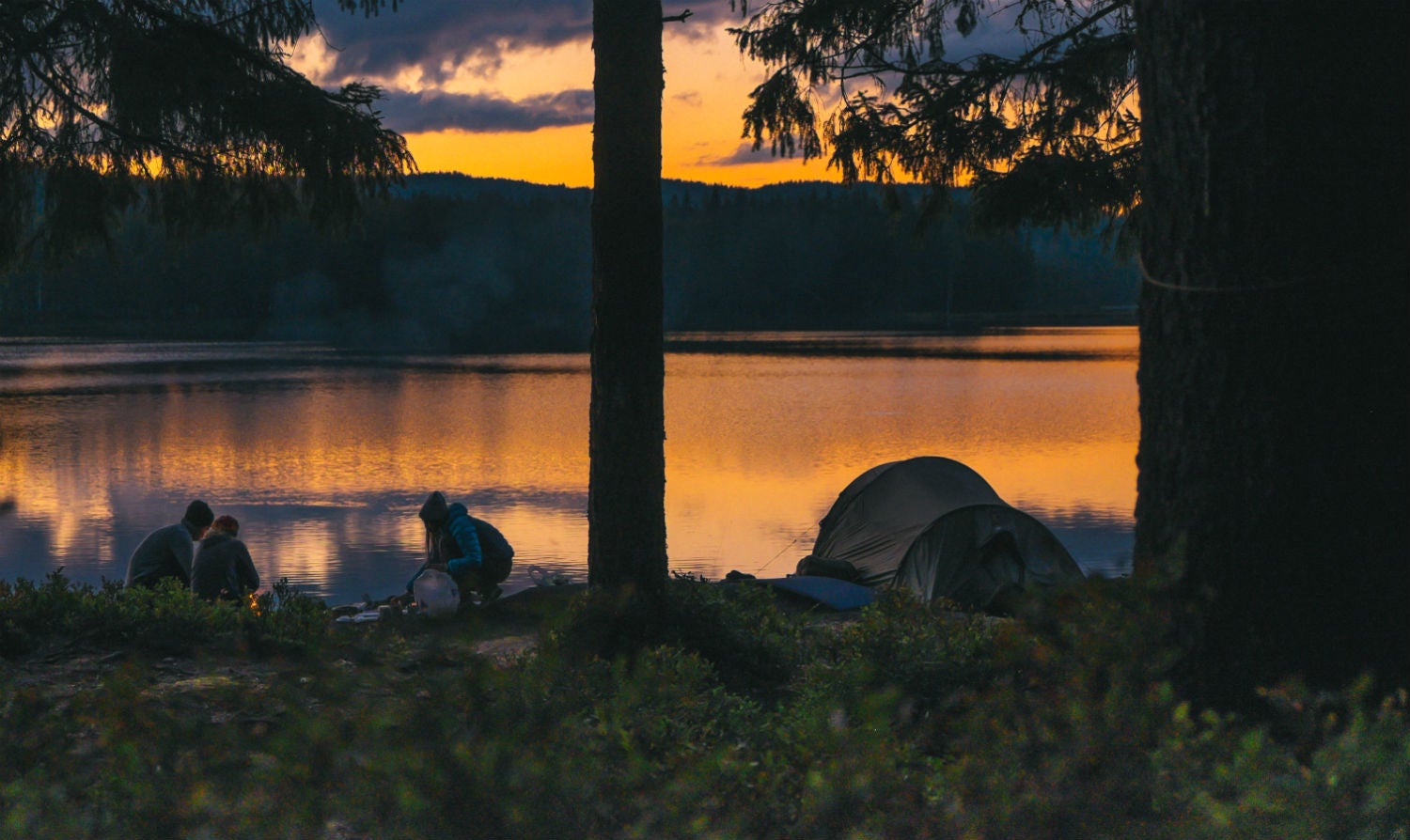
Prepare for your next adventure by downloading maps. The Dyrt PRO lets you download maps and campgrounds without cell service. “My alternative to using pro would be to drive back out to cell service”.
Bivouac: /ˈbɪvʊˌæk;/ Sleeping outside in a crude temporary shelter without the benefit of a campsite or tent. Bivouacing can look like camping with just a sleeping bag or bivy sack (see below) or it might refer to camping on a rock ledge during an extended, multi-day climbing expedition. Climbers might also bivouac on a portaledge if there isn’t a natural surface available during multi-day ascents.
Bivy Sack: /ˈbɪviːsæk/ A sack that is lighter and less substantial than a sleeping bag that can be used to sleep in, for temporary shelter, or added warmth in survival scenarios. Can also be used with a sleeping bag as an extra layer.
Black Water: /blak ˈwôdər/ Wastewater from toilets, usually from and RV or Trailer, containing everything that you flushed down the toilet.
Blaze: /bleɪz/ A mark made on the trunk of a tree to help guide hikers on the trail. They might be color coded if there are multiple trails in the area.
BLM: /biː ɛl ɛm/ Stands for Bureau of Land Management, a division of the United States Department of the Interior. The BLM oversees about 247.3 million acres of public lands. Not to be confused with Black Lives Matter.
Related Reading:
Yes, You Can Find Free Camping in National Forests: Here’s How
Bonk: /bɒŋk/ To bonk is to hit your limit, when you have nothing left to give. When you’re out of energy and you’ve got no glycogen left to fuel your muscles after a hard run, hike, climb, or ski sesh, you have bonked. Re-up your blood sugar, rest, and try again. (Or if you’re miles away from the finish line, pound some gel and try to think about the pizza you’ll eat later.)
Boondocking: /bün-däks‐ɪŋ/ camp off-the-grid, far from the services and amenities that can be found at RV parks or developed campgrounds. Similar but distinct from from dry camping.
Boulder: /ˈbəʊldə/ A style of rock climbing that doesn’t require ropes or harnesses and instead relies on thick foam crash pads for safety. Bouldering involves more horizontal or angular movement (called traverse problems), rather than tackling vertical rock faces or big walls.
Cache: /kæʃ/ A hidden stash of treats left by a trail angel (see below).
Cairn: /kɛərn/ When you can’t follow blazes because there aren’t any trees (such as in alpine environments), purposeful piles of small stones called cairns mark the trail.
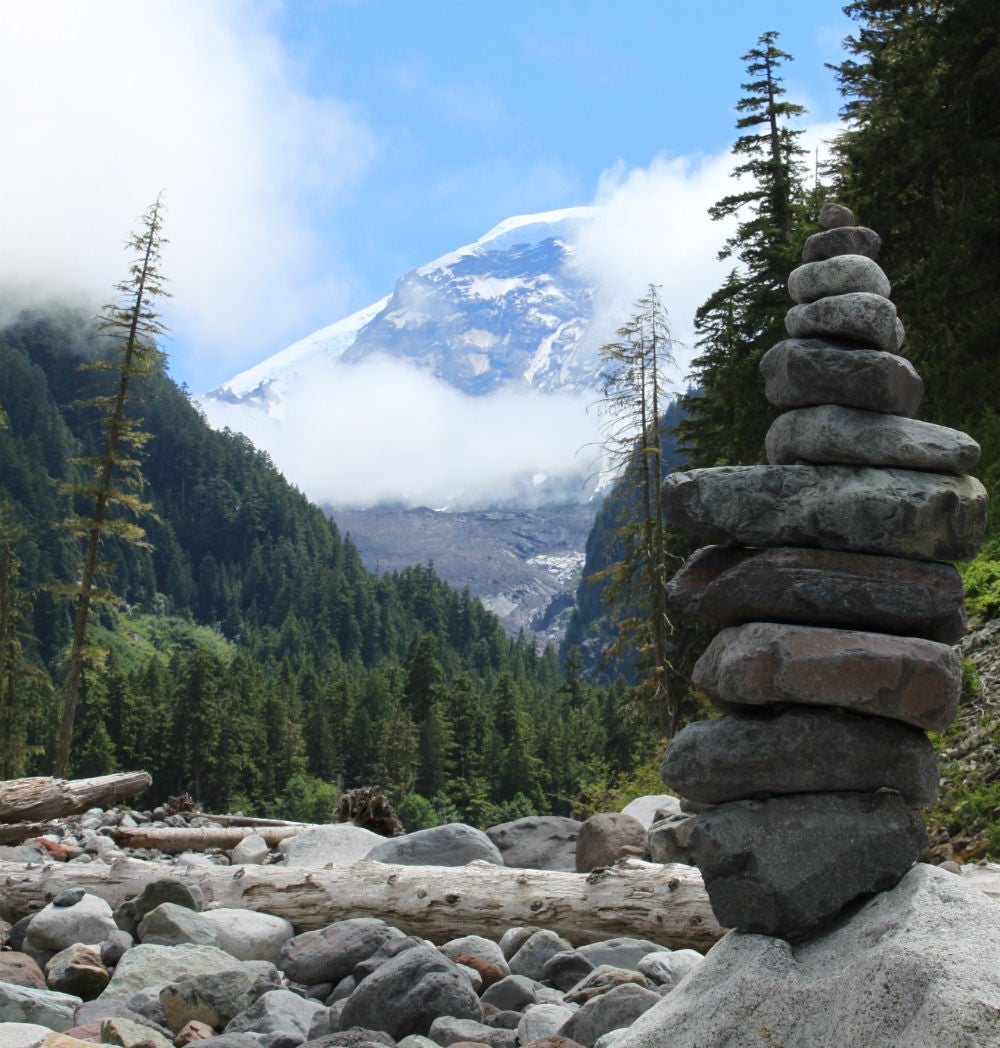
Image from The Dyrt Camper Megan C., at Ipsut Creek Camp in Washington.
Car Camping: /kɑr kæmp‐ɪŋ/ A type of camping that involves driving into a campsite and using your vehicle to haul your gear in. Car camping really expands your food and beverage options.
Cat Hole : /kæt həʊl/ The hole you dig to poop outside, kind of like cats dig in their litter boxes.
Cliff Out: /klɪf aʊt/ To cliff out means reaching a point on your hike where you can’t go any further because of a major impediment like, say, the edge or face of a cliff. Cliff out can also refer to quitting a hike or climb for other reasons, like bonking.
Col: /kɒl;/ The lowest point on a mountain ridge between two peaks, also known as a gap, saddle, or notch, depending on where you’re from.
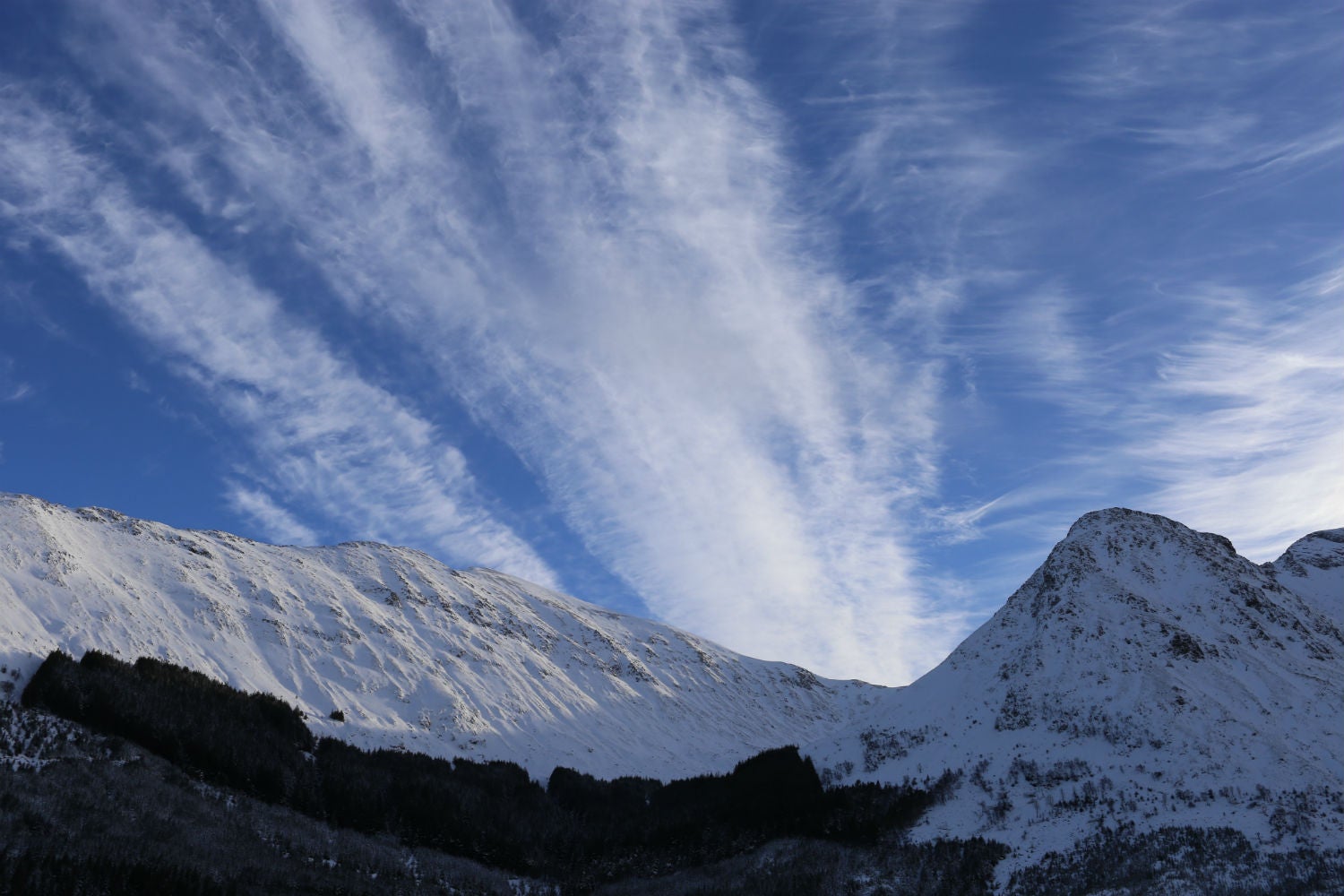
Cowboy Camping: /ˈkaʊˌbɔɪ kæmp‐ɪŋ/ See “bivouac.” No tent? No problem. Camp like a cowboy and sleep under the stars on whatever you have available.
Cowboy Coffee: /ˈkaʊˌbɔɪ ˈkɒfɪ/ Brewing ground coffee directly in your hot water, without filters or fancy decanting methods. No French or Aero presses here folks! Forget your Chemex. It’s just you and your beans. Doesn’t sound like your thing? Here are some more refined camp coffee brewing methods.
Crag: /kræɡ/ The place where climbers go to, well, climb. The crag isn’t what you climb, it’s just the area at the base of the routes or boulders. It’s where you stash your gear, where the belayer stands or you throw down your crash pads, and where all the spectators sit. You can expect to see a bunch of crag dogs, too, and even a crag cat or two.
Related Reading:
My Latest Project: Embracing Fear on the Climbing Wall
Crux: /krʌks/ The most difficult part of whatever you’re doing.
Digger: /ˈdɪg ər/ When you face plant, especially over the handlebars of your bike, as in “Wow, he did a digger. That had to hurt.”
Dirtbag: /dɜrtbæɡ/A person who lives an ultra-minimalist lifestyle so they can spend every waking moment on outdoor pursuits. A dirtbag might live in his or her car or van, work remotely or seasonally, and voluntarily adopt an impoverished, itinerant lifestyle to dedicate all of his or her time and resources to climbing, hiking, skiing, or another outdoor sport. The dirtbag lifestyle really took off in the 1960s in Yosemite with the advent of modern climbing culture.
Dispersed Camping: /dəˈspərs kæmp‐ɪŋ/ the term given to camping in the United States on public land other than in a designated campsites. This type of camping is most common on National Forest and Bureau of Land Management land.
Double Blazes: /ˈdʌbəl bleɪzɪz/ Two marks, typically on trees, that let you know that a turn or major intersection is ahead. Get out your map if you’ve got one and pay extra attention to make sure you keep going the right way.
Dry Camping: /drī kæmp‐ɪŋ/ Camping without hook-ups. While boondocking is camping with out hookups in the wilderness, dry camping can happen at a developed campground.
False Peak: /fɔːls pik/ You think you’ve reached the top, only to realize you just did some other small pointy bit that’s not actually the summit. False peaks are very disheartening when you’re about to bonk.
Footprint (tent): /ˈfʊtˌprɪnt/ The amount of ground your tent takes up. Can also refer to the liner specifically made to go under a tent to help mitigate moisture.
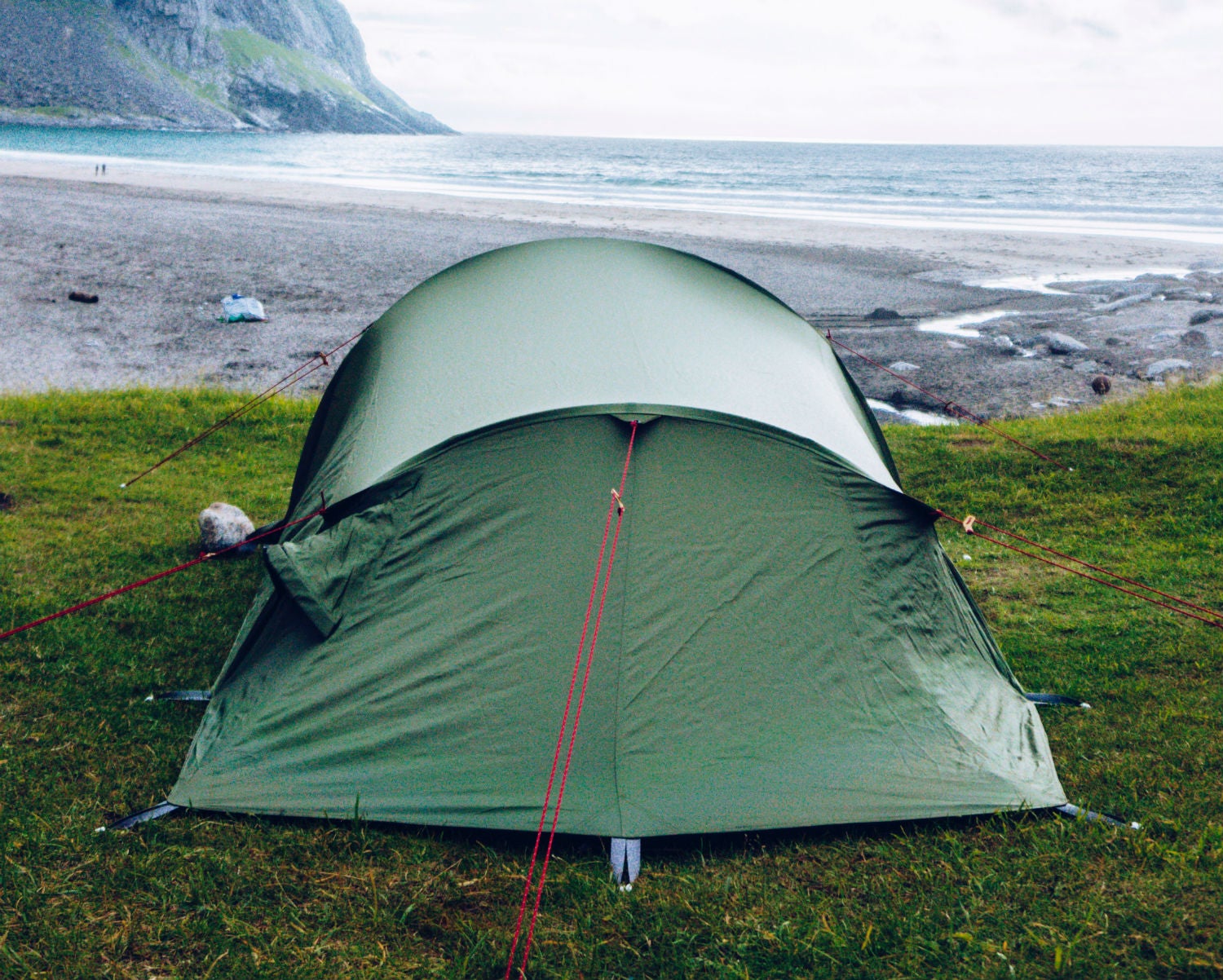
Glamping: /ɡlampiNG/ a form of camping involving accommodation and facilities more luxurious than those associated with traditional camping, such as yurts or cabins.
Glass: /glæs/ The binoculars or scope hunters use to look for game. As a verb, to glass is to scan all countryside in sight for wildlife, often using binoculars.
Glissade: /ɡlɪˈsɑːd; -ˈseɪd/A way of sliding down snow or a glacier on your butt, using an ice axe to control speed and steer. Learn how, here.
GORP: /gɔrp/ Another name for trail mix. According to lore, it stands for Good Old Raisins and Peanuts, but that’s contested.
Grey Water: /ɡrā ˈwôdər/ wastewater generated in campers from baths, sinks, washing machines, and other kitchen appliances.
Groover: /gruvər/ A type of primitive toilet used outside. It’s basically a plastic bucket into which you make your deposit. It gets the name from the marks the bucket rim leaves on your backside.
Groundsheet: /ˈgraʊndˌʃit/ Similar to a footprint, a groundsheet is a waterproof layer made of plastic, canvas, or a tarp that goes under your tent, sleeping bag, bivvy sack, or bod to keep the dew and moisture off you.
Guyline: /gaɪlaɪn/ The ropes that come off your tent and attach to stakes in the ground, adding extra stability and protection against wind or your own midnight flailing.
Hiker Trash: /haɪkər træʃ/ No, not litter. It’s what some people call hikers pouring off big trails into small mountain towns in search of burgers, ice cream, and the post office. They usually haven’t showered in awhile. The term tends to be used in a derogatory manner, but many hikers claim the name proudly, as a badge of honor.
Hookup: /ˈho͝okˌəp/ When your campsite provides direct plug ins to electricity, water, or sewage. When a campsite offers all three its considered a full-hookup.
Related Reading:
The Trail Less-Traveled: 4 Underrated Thru-Hikes
Kindling: /ˈkindliNG/ Wood for campfire that is larger than tinder, but smaller than a firewood. Sticks are the most common kindling.
Leave No Trace: /liv noʊ treɪs/ Often abbreviated to LNT, this is one of the most important camping terms to remember. A philosophy and practice crucial to conserving outdoor spaces. Basically, leave it like you found it—or go a little further and leave it better than you found it. Don’t litter, don’t disturb plants and wildlife. Don’t pollute the landscape with your poop—or your pet’s poop. If someone comes through a trail or campsite after you, they shouldn’t be able to tell that you were ever there.
Moleskin: /ˈmoʊlˌskɪn/ A soft, heavy kind of cotton felt with a sticky backing that you can use to protect your body from blisters and chafing. You definitely want this in your pack at all times! (And yes, it’s also your favorite journal.)
Mummy Bag: /ˈmʌm i bæɡ/ A type of sleeping bag shaped like a deceased, embalmed Pharaoh, or any other human body. A mummy bag is wider up at your head and tapered at your feet. The idea is that the sleeping bag can keep you warmer without wasted space near your extremities, and it’s also less to pack.
No-See-Ems: /noʊˈsi əm/ Ceratopogonidae, or biting midges, are even more terrible than mosquitos, because you can’t hardly spot them when they’re biting you and making you itchy.
Peak Bagging: /pik bæɡ‐ɪŋ/ Collecting mountain summits. Especially if you’re trying to summit mountains that all have something in common, like a particular elevation. As in, “Dude, I’ve been trying to bag all the 14’ers in Colorado.”
Poop Shovel: /pupˈʃʌv əl/ The small trowel you carry to dig a cat hole so you can, well, you know.
Related Reading:
How to Responsibly Poop Outside
Primitive Camping: /ˈprɪm ɪ tɪv kæmp‐ɪŋ/A style of camping with very few amenities, usually at a site you need to backpack to. When primitive camping you can expect zero electricity, cell phone service, running water, and no bathrooms except the cat hole you dig with your poop shovel.
Privy: /ˈprivē/ another word for outhouse, a privy is a toilet located in a small shed outside a house or other building
Project: /ˈprɒdʒ ɛkt/ Another word for a route in climber lingo.
Puffy: /ˈpʌf i/ A kind of jacket, usually filled with down or synthetic down filler, that’s especially warm in the winter, lightweight, and quick to dry. If you’ve ever been to Outdoor Retailer in Colorado, then you’ve seen (or been part of) a sea of puffys. You will also see lots of puffys in climbing gyms, startup offices, and Bend, Oregon.
Rainfly: /reɪnflaɪ/An extra layer that goes over your tent to repel moisture and light. Don’t leave home without it, especially when camping in the Pacific Northwest!
Related Reading:
Enjoy More Camping Days by Waterproofing Your Gear
Rating (sleeping bags): /ˈreɪ tɪŋ/ The temperature at which your sleeping bag can keep you warm—or at least, not frozen to death. If you’re going to be spending nights in freezing temperatures, you might want to spring for the 0° bag. Then again, a sleeping bag that’s rated for subzero temperatures isn’t going to be very comfortable on a camping trip in Florida in July.
Redline: /ˈrɛdˌlaɪn/ To hike absolutely every trail there is to hike in an area, including connectors and spurs. If there’s a map of a park or a region and you can run a highlighter over every trail on the page without leaving anything uncolored, you’ve redlined it.
Rucksack: /ˈrɛdˌlaɪn/ Another word for backpack. In German, rucksack literally means “back bag.” Now it often refers to a smaller bag or daypack.
Scree: /skri/ a section of small rocks that usually form a field, which can be tricky to cross without slipping.
Send: /sɛnd/ To complete something, whether it’s a climb or a hike or a tough mountain biking route. If you manage to top a really hard climbing project without falling, your friends might congratulate you “Wow, I can’t believe she sent it!”
Shoulder Season: /ˈʃoʊl dərˈsi zən/ The time just before the prime season for a sport, or between outdoor sports. Early spring and late fall tend to be shoulder seasons. When it’s not quite cold or snowy enough for skiing or ice climbing, but the weather isn’t ideal for hiking or bouldering, for example. Campgrounds are much less crowded during the shoulder season.
Spur: /spɜr/ An offshoot of a main trail, usually on the way to an interesting feature like an overlook or a waterfall or a climbing crag, but which doesn’t connect to other trails or even dead ends. On the Appalachian Trail, these are often indicated with blue-colored blazes.
Stoke: /stoʊk/ The most overused word in the outdoor industry — but yeah, we’re super stoked, too. The term has evolved from the original surf culture meaning, which is synonymous with excitement (as in “I’m so stoked for our ski trip!”) to a whole life philosophy. Ethan Linck might have put it best in High Country when he wrote, “stoke has become an ethos, claiming the best life is one lived with unbridled enthusiasm and the uncomplicated pursuit of experience.”
Sufferfest: /ˈsʌf ərfɛst/ A term that comes from endurance sports which refers to an extra long race, climb, or other feat that you know is going to be as much about overcoming extreme physical discomfort as it is about the thrill of participating. A sufferfest involves a lot of Type II Fun (see below). Can also refer to a group ride for cyclists.
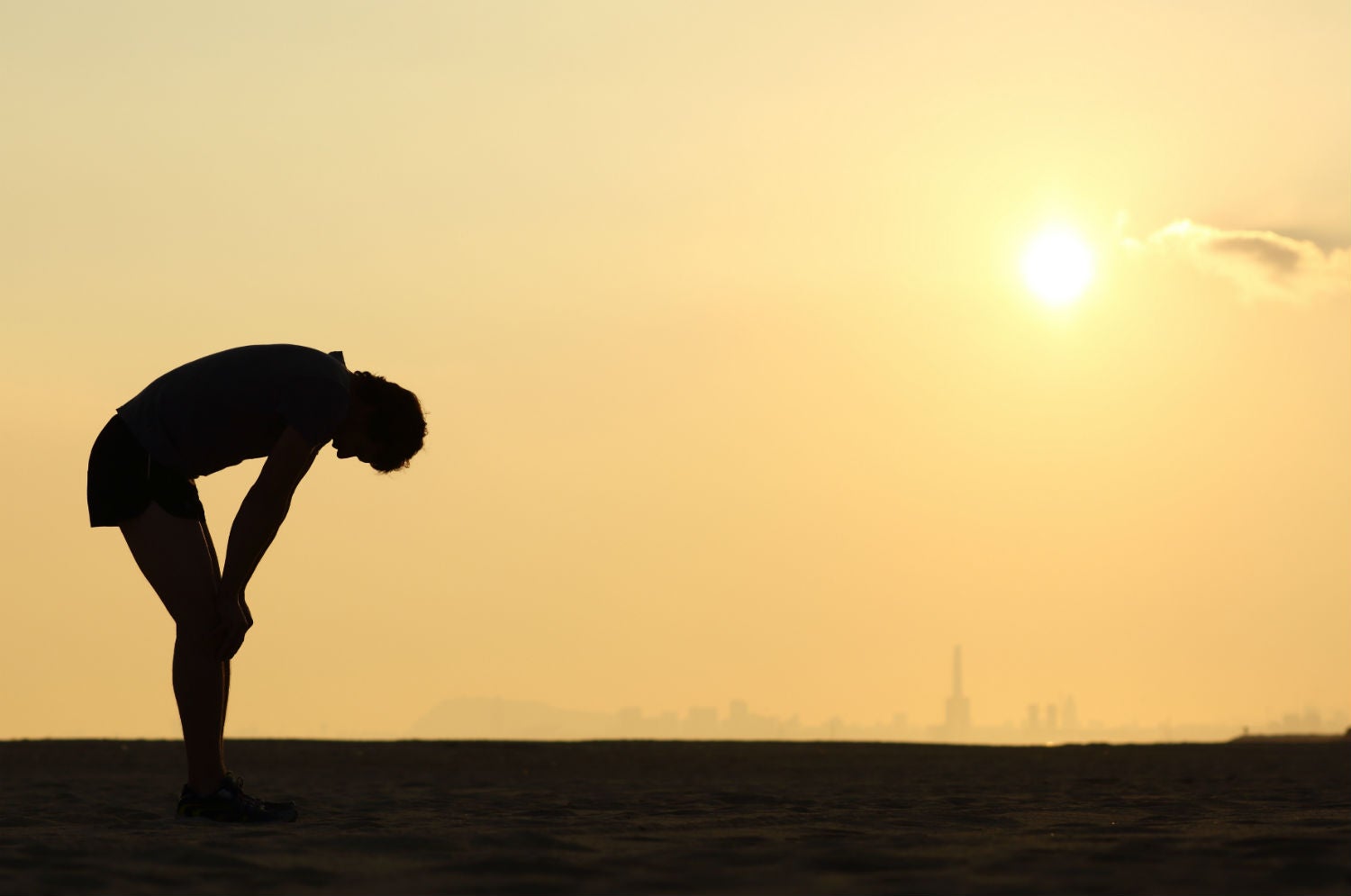
Switchback: /ˈswɪtʃˌbæk/ When the trail going up a hill or mountain has a 180° turns to help you achieve a climb in elevation over a relatively short distance. A great way to turn your hike into a sufferfest.
Technical: /ˈtɛk nɪ kəl/ The other most over-used word in the outdoor industry. At its most essential, “technical” refers to the level of technique and knowledge required to accomplish the activity at hand while staying in control. For example, a technical descent would require a high degree of skill, whether because the terrain involves a lot of twists and turns, unexpected conditions like scree or icy snow, hidden obstacles, tight turns or drop offs, or might require periods of extreme acceleration.
Tinder: /ˈtindər/ easily combustable material used as the basis of starting a campfire. Birch bark, leaves, pine needles are all commonly used as tinder. Once the tinder is ignited, you then add kindling to grow the fire
Trad Climbing: /træd klaɪm‐ɪŋ/ Short for “traditional climbing,” trad climbing is a style that requires climbers to carry all the gear they need to stay safe in case of a fall. They place support gear in the wall as they climb and remove it when they’re done. This is in contrast to other styles of climbing in which climbers can rely on pre-set bolts and nuts for safety that were pre-placed by other climbers (kind of like at your climbing gym).
Related Reading:
Full-Time Campers: Disaster on the Road
Trekking pole: /trɛkɪŋ poʊl/ These special lightweight tools are designed to help you achieve greater stability and endurance on your hike. They help with support and balance.
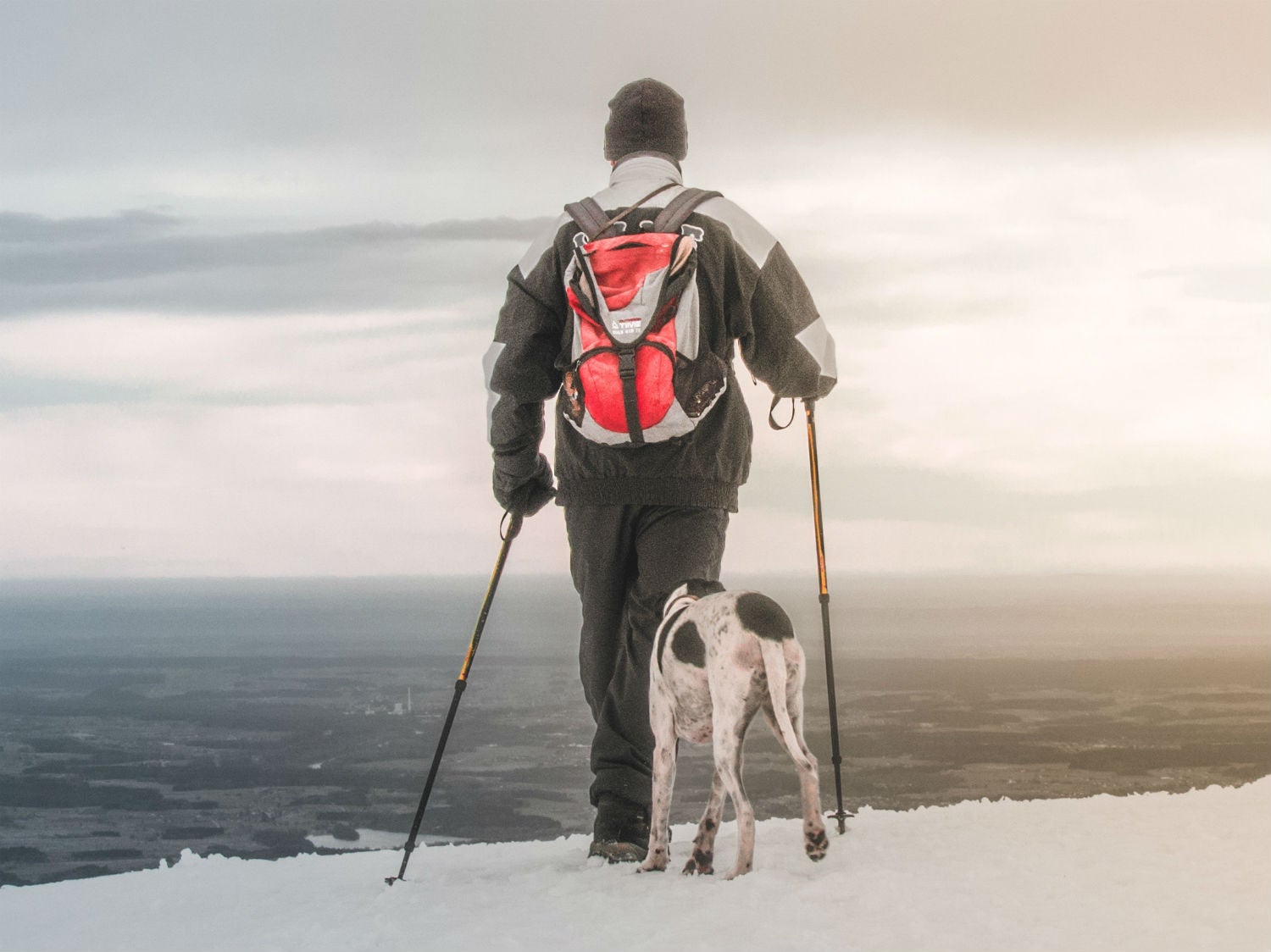
Type II Fun: /taɪp tu fʌn/ A challenging experience that doesn’t really feel like fun. It feels more like pain and misery. If you’re slogging up the side of a scree field and you’re sucking wind and your calves are burning, you’re probably having type II fun. Once you’re done, you’ll forget all the misery and the experience will seem like fun in retrospect. You’ll tell all your friends it was fun. But in the moment, you’re mostly suffering. See also: Sufferfest.
Understory: /ˈʌn dərˌstɔr i/ The layer of plant life that grows below the tree canopy and above the forest floor.
Vault Toilet: /vôlt ˈtoilit/ a permanent waterless restroom that sits above a vault or “pit” that is serviced regularly by a local waste removal company. Vault restrooms do not require plumbing or electricity
Vitamin I: /ˈvaɪ tə mɪn aɪ/ Ibuprofen or another anti-inflammatory. Just what every hiker needs after grueling miles on already sore feet in boots that have probably revealed themselves to be slightly too small.
Wag Bag: /wæg bæg/ Any kind of bag you use to pack out your poo. It’s short for Waste Alleviation and Gelling Bag, a specific product developed for this purpose. The name expanded beyond the brand though, kind of like how Kleenex refers to all tissues.
Web-walking: /wɛbˈwɔ kɪŋ/ Heading down the trail first thing in the morning, before anyone else, and having to deal with all the webs criss-crossing the trail that spiders wove the night before. If you’re going web-walking, it might be smart to carry a stick or use your trekking pole to keep all the webs (and their residents) out of your face and hair.
Yellow Blazing: /ˈyɛl oʊ bleɪzɪŋ/ Hopping off trail to take a shortcut along an actual road. The “yellow” part refers to the markers on most two-lane roads.
If you’re looking for even more lingo, check out Midland‘s guide to radio lingo, and their article answering the question, “what is vox on a walkie talkie?“
The Dyrt is the only camping app with all of the public and private campgrounds, RV parks, and free camping locations in the United States. Download now for iOS and Android.Popular Articles:
Articles on The Dyrt Magazine may contain links to affiliate websites. The Dyrt receives an affiliate commission for any purchases made by using such links at no additional cost to you the consumer.

